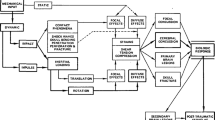Abstract
A high-resolution 3D finite difference model of the electrical conductivity distribution in a human thorax based on a 43-slice MRI data set along with lead field theory was used to examine the effect of thoracic conductivity inhomogeneities on sensitivity distributions. The electrode configurations used in the present study were based on an eight-electrode array positioned evenly around the thoracic model at a level close the nipple line. Sensitivity distributions of each possible adjacent pair current excitation pattern for both the homogeneous thoracic model and the heterogeneous thoracic model were evaluated. The results show that thoracic inhomogeneities significantly perturb sensitivity distribution patterns. Although for a given thoracic geometry the electrode configuration gives the overall sensitivity distribution features, sharp large local changes occur near the boundaries between different tissues in the heterogeneous model. The results of sensitivity distributions of the heterogeneous thoracic model demonstrate the feasibility of impedance source localization. Selectivity can be used to as a guide to finding favorable electrode configuration for regional impedance monitoring.









Similar content being viewed by others
References
Anderson F., Penney B., Patwardhen N., Wheeler H. (1980) Impedance plethysmography: the origin of electrical impedance changes measured in the human calf. Med. Biol. Eng. Comput. 18: 234–240
Atzler E., Lehman G. (1932) Über ein neues verfahren zur darstellung der herztätigkeit. Arbeitsphysiologie 5: 636–680
Belalcazar A., Patterson R. P. (2004) Improved lung edema monitoring with coronary vein pacing leads: a simulation study. Physiol. Meas. 25: 475–487
Bernstein D. P. (1986) A new stroke volume equation for thoracic electrical bioimpedance – theory and rationale. Crit. Care Med. 14: 904–909
Brown B. H., Barber D. C., Seagar A. D. (1985) Applied potential tomography: possible clinical application. Clin. Phys. Physiol. Meas. 6: 109–121
Gabriel S., Lau R. W., Gabriel C. (1996) The dielectric properties of biological tissue: II. Measurements in the frequency range 10 Hz to 20 GHz. Phys. Med. Biol. 41: 2251–2269
Geddes A. L., Baker E. L. (1967) The specific resistance of biological material – a compendium of data for the biomedical engineer and physiologist. Med. Biol. Eng. 5: 271–293
Geselowitz D. (1971) An application of electrocardiographic lead theory to impedance plethysmography. IEEE Trans. Biomed. Eng. 18: 38–41
Kauppinen P. K., Hyttinen J. A., Malmivuo J. A. (1998) Sensitivity distribution of impedance cardiography using band and spot electrodes analyzed by a three-dimensional computer model. Ann. Biomed. Eng. 26: 694–702
Kauppinen P. K., Hyttinen J. A., Malmivuo J. A. (2005) Sensitivity distribution simulation of impedance tomography electrode combination. IJBEM 7: 344–347
Kauppinen P. K., Koobi T., Kaukinen S., Hyttinen J. A. (1999) Application of computer modeling and lead field theory in developing multiple aimed impedance cardiography measurements. J. Med. Eng. Technol. 23: 169–177
Kubicek W. G. (1989) On the source of peak first time derivative (dZ/dt) during impedance cardiography. Ann. Biomed. Eng. 17: 459–462
Kubicek W. G., Karnegis J. N., Patterson R. P., Witsoe D. A., Mattson R. H. (1966) Development and evaluation of an impedance cardiac output system. Aerosp. Med. 37: 1208–1212
Lehr J. (1972) A vector derivation useful in impedance plethysmographic field calculations. IEEE Trans. Biomed. Eng. BME-19(2):156–157
Malmivuo J. A., Plonsey R. (1995) Bioelectromagnetism: principles and application of bioelectrica and biomagnetic fields. New York: Oxford University Press pp 405–407
Nyboer J., Bango S., Barnett A., Halsey R. H. (1940) Radiocardiograms – the electrical impedance changes of the heart in relation to electrocardiograms and heart sounds. J. Clin. Invest. 19: 733
Patterson, R. P., W. G. Kubicek, E. Kinnen, D. A. Witsoe, and G. Noren. Development of an electrical impedance plethysmography system to monitor cardiac output. In: Proceedings of the 1st Annual Rocky Mt. Bioengineering Symposium, 1964, pp. 56–71
Patterson R. P., Wang L., Raza B., Wood K. (1990) Mapping the cardiogenic impedance signal on the thoracic surface. Med. Biol. Eng. Comput. 23: 212–216
Sakamoto K., Muto K., Kanai H., Izuka M. (1979) Problems of impedance cardiography. Med. Biol. Eng. Comput. 17: 697–709
Salazar Y., Bragos R., Casas O., Cinca J., Rosell J. (2004) Transmural versus nontransmural in situ electrical impedance spectrum for healthy, ischemic, and healed myocardium. IEEE Trans. Biomed. Eng. 51(8):1421–1427
Sramek, B. B. Noninvasive technique for measurement of cardiac output by means of electrical impedance. In: Proceedings of the 5th International Conference on Electrical Bioimpedance, Tokyo, Japan, 1981, pp. 35–39
Tishcenko M. I., Smirno A. D., Danilov L. N., Aleksandrov A. L. (1973) Characteristics and clinical use of integral rheography – a new method of measuring the stroke volume. Kardiologiya 13: 54–62
Van De Water J. M., Mount B. E., Barela J. R. (1973) Monitoring the chest with impedance. Chest 64: 597–603
Wang L., Patterson R. P. (1995) Multiple sources of impedance cardiogram based on 3D finite difference human thorax models. IEEE Trans. Biomed. Eng. 42: 141–148
Wilson J., Milnes P., Waterworth R., Smallwood H., Brown H. (2001) Mk3.5: a modular, multi-frequency successor to the Mk3aEIS/EIT system. Physiol. Meas. 22(1):49–54
Witsoe A. D., Kinnen E. (1967) Electrical resistivity of lung at 100 kHz. Med. Biol. Eng. 5: 239–248
Wtorek J. (2000) Relations between components of impedance cardiogram analyzed by means of finite element model and sensitivity theorem. Ann. Biomed. Eng. 28: 1352–1361
Wtorek J., Polinski A. (1995) Examination of impedance cardiography properties – FEM model studies. Biomed. Sci. Instrum. 31: 77–82
Yang F., Patterson R. P. (2007) The contribution of the lungs to thoracic impedance measurements: a simulation study based on a high resolution finite difference model. Physiol. Meas. 28:S153–S161
Zhang E., Shao S., Webster J. (1984) Impedance of skeletal muscle from 1Hz to 1MHz. IEEE Trans. Biomed. Eng. BME-31(6): 477–481
Acknowledgements
We would like to thank Minnesota Supercomputing Institute for the computation resources. This study was supported in part by a gift from Earl Bakken, founder of Medtronic.
Author information
Authors and Affiliations
Corresponding author
Rights and permissions
About this article
Cite this article
Yang, F., Patterson, R. A Simulation Study on the Effect of Thoracic Conductivity Inhomogeneities on Sensitivity Distributions. Ann Biomed Eng 36, 762–768 (2008). https://doi.org/10.1007/s10439-008-9469-0
Received:
Accepted:
Published:
Issue Date:
DOI: https://doi.org/10.1007/s10439-008-9469-0




